Using foam glass for orchids
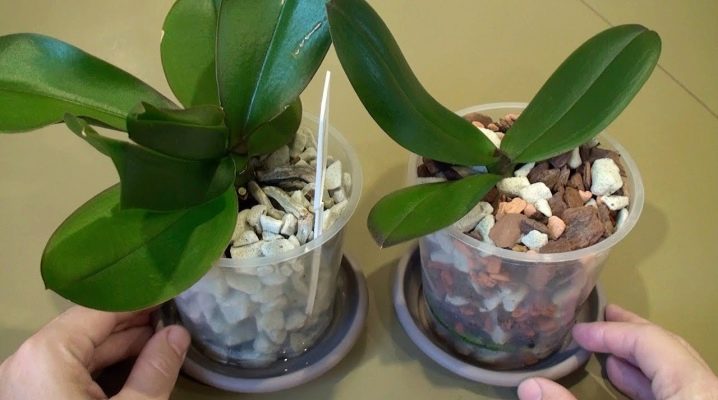
Orchids are delicate and beautiful tropical plants that naturally grow in warm, humid climates. To create similar conditions in ordinary urban apartments, a substrate is required that can constantly retain heat, moisture and air at the location of the root system. Foam glass is a relatively new substrate, but it has already proven itself well. In the article we will talk about its pros and cons, explain how to prepare and plant an orchid with its help, how to care for it.
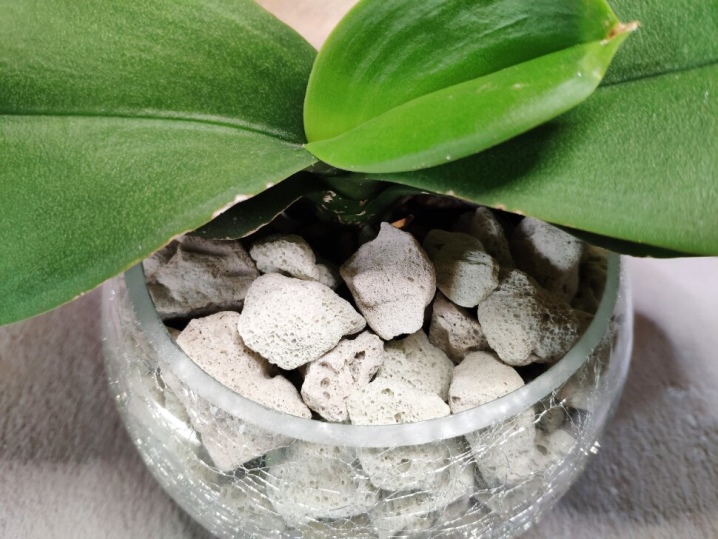
Peculiarities
According to the characteristics of the roots, orchids are divided into 2 groups:
- epiphytes - with an aerial root system;
- geophytes - with roots in the soil.
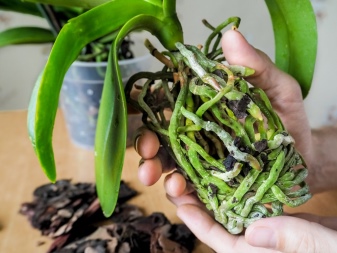
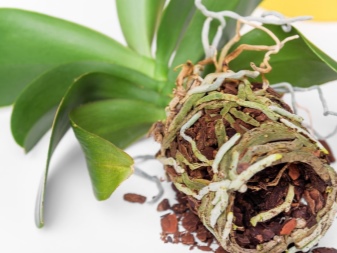
For the first group, light ventilating substrates are needed not only to retain moisture and air, but also to fix the spreading roots in the pot space. For terrestrial species growing in normal soil, substrates should be heavier and more water-consuming.
Epiphytes grow well in foam glass without the addition of other components, even in a very dry apartment climate.
For geophytes, foam glass is used as a drainage layer or mixed with other heavy soil components.
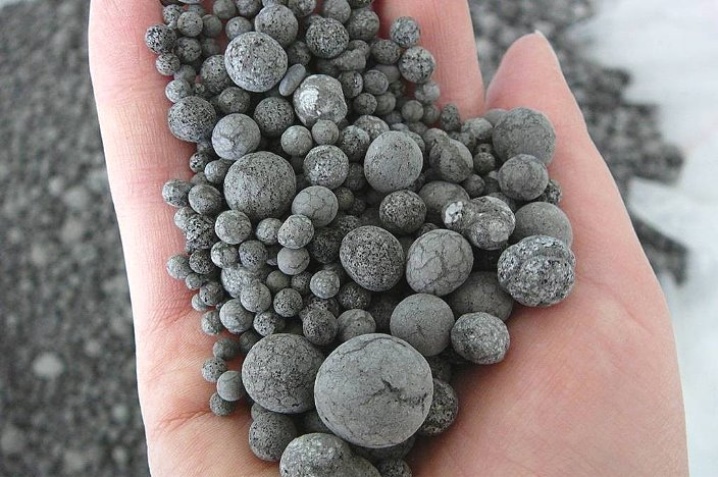
The material is made from silicate glass, literally foaming at a temperature of 1200 °. The result is a cellular material of high strength, airiness, which retains constant heat and does not allow water to pass through. As such, it is used for construction purposes.
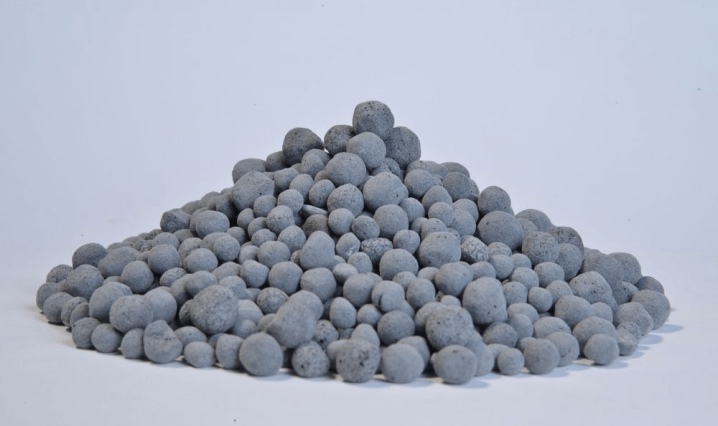
For the needs of flower growers, the formula of the product was changed, and the foam glass acquired an additional ability: to absorb moisture. The result is a highly effective product that improves the structure of the soil and increases its productivity. The material does not crumble, it mixes easily with other components. Therefore, for growing flowers, foam glass for construction purposes is not used, but only the specialized substrate GrowPlant. The value of foam glass as a material for the cultivation of orchids lies in its characteristics.
- The product has excellent water absorption. Foam glass (GrowPlant) is instantly saturated with water when irrigated, unlike tree bark, which has to be soaked for hours. The substrate absorbs up to 70% of the liquid based on its own weight. The arrangement of porous cells (micro and macropores) allows maintaining the horizontal distribution of the water balance, which contributes to a uniform dosed supply of moisture to each root.
- Along with the water, minerals (calcium, sodium) present in the substrate itself enter, and the plant is partially nourished.
- Due to the porosity of the material, aeration is maintained in the flower pot, the gas exchange required by the flowers is carried out. It prevents waterlogging of the soil mixture and helps to exclude root rot.
- The versatility of foam glass lies in a wide range of applications. It can be used as an independent filler or as a drain. It combines well with various substrates and is filled with both water and liquid with nutrients. For example, for small orchids, a mixture of foam glass with expanded clay is suitable, and for large orchids, sphagnum moss and oak or pine bark can be added to the same composition.
- The material is durable, does not deteriorate from moisture, time, chemicals, does not crumble, does not cake. It can be used repeatedly.
- Foam glass is not affected by fungus and pathological microflora, insects and rodents do not like it.
- The substrate is environmentally friendly, does not contain harmful impurities, toxic substances, volatile vapors.
- A mixture of foam glass with soil does not lead to alkalization or salinity.
- The material is not in short supply and is available to any florist.
- The substrate looks aesthetically pleasing, forming a single composition with the orchid.


As you can see, the substrate has a lot of pluses, but it's time to talk about the minuses.
- Granules do not have a smooth surface, their roughness can disturb the velamen layer of the roots.
- The substrate itself contains few mineral elements.
- In dry and warm apartments, it will be necessary to irrigate foam glass frequently.
- Small and large cells of the granules are not interconnected, so there is no general capillary communication.
- An orchid may not immediately perceive material of artificial origin, it will take time to adapt.
- Foam glass weighs relatively a lot.
- The product is expensive because of its high qualities.
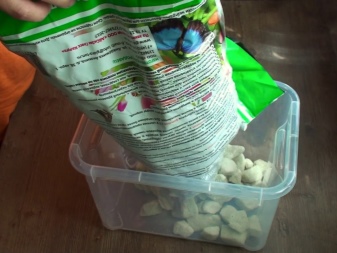

The substrate is produced in unequal fractions from 5 to 30 mm. For orchids, a mixture of ingredients of different sizes is used.
The product can be in the form of granules, crushed stone or gravel. GrowPlant foam glass packs should be stored unopened in a dry place. The shelf life is not limited.
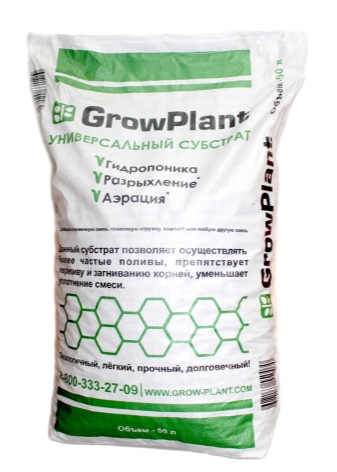
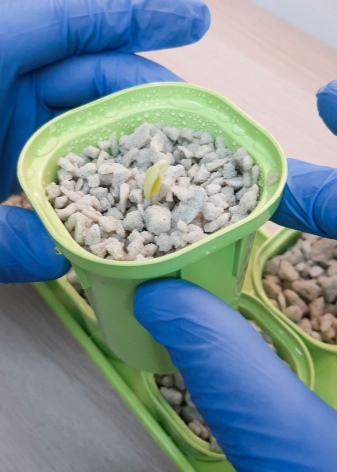
How to prepare the substrate?
Orchids are planted only in a moist foam glass substrate. The material absorbs liquid well, but there is a way to further increase its moisture holding capacity. To do this, the crushed stone is boiled and then sharply cooled by placing it in cold water. This makes it possible for the pores to completely free themselves from the presence of air and absorb as much moisture as possible.
If the foam glass is not boiled, the granules will still have to be rinsed with running hot water to free them from too small fractions. After cleaning the substrate, it should be left unattended for a day, and only then continue the preparatory work.
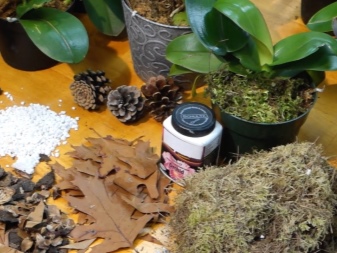
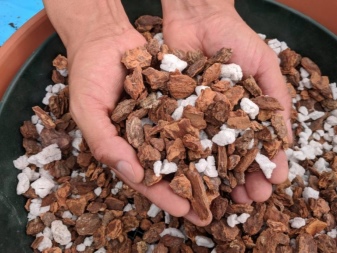
For planting an orchid, it is better to purchase a pot made of transparent plastic, then it will be easier to distribute the substrate among the roots and it is more convenient to observe their development and growth.
To prevent the appearance of fungal and bacterial diseases in orchids, you need to use the liquid preparation "Fitosporin-M", dilute it with warm water. In the resulting liquid, it is necessary to soak the foam glass for a day. You can go the other way: hold the plant roots in the "Fitosporin-M" solution for 2 hours, and then plant them in a substrate saturated with moisture.
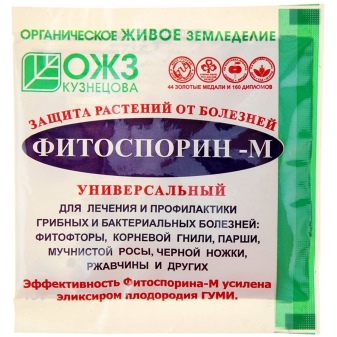

It would not be superfluous to check the hydrogen index of the liquid (pH) before planting the flower. To do this, stock up on test strips. The normal value is 5.8 pH units. With an increase in the indicator, baking soda must be added to the water at the rate of 1 tbsp. l. for 1 liter. After a day, analyze the pH again.
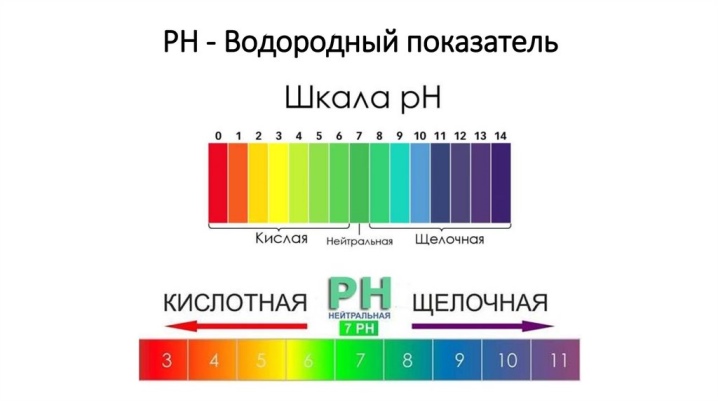
How to plant?
When the foam has been treated with "Fitosporin" and then saturated with moisture, it's time to start the transplant. You can transplant an orchid in a certain way.
- The flower must be carefully removed from the old pot or organic substrate, the roots must be rinsed and examined carefully.
- Remove dry and damaged parts with a secateurs.
- Cut sites can be treated with activated carbon.
- Immerse the plant in a solution of "Fitosporin" or another antiseptic for several hours.
- The bottom of the pot must be laid out with fine gravel, the crumb forms less voids.
- Dip the orchid into a container for transplanting and, holding it in weight, evenly distribute the roots throughout the entire volume of the pot.
- Then it is necessary to carefully fill the space with medium-sized foam glass, being careful not to damage the roots. In order for the material to compact, you need to lightly tap on the walls of the container.
- In conclusion, it is better to place a layer of coarse rubble on the very top of the flower pot.
- Aerial roots can protrude from the surface and give the plant a magical look.
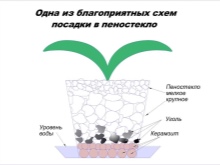
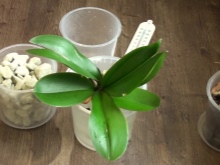

How to care?
In caring for orchids, the main thing is not to dry out the roots. There are many ways to water the plant.
- With normal irrigation, excess liquid is collected in a pan, the pot is immersed in it by 2-3 cm. When it dries, the substrate draws on the evaporating water and keeps the roots of the plant moist. With this method, the next watering is carried out only when the liquid in the sump runs out of cavity.
- The second method involves immersing a container with an orchid by two-thirds in warm water. You only need to hold the pot for a few seconds, and this will be enough to saturate the substrate with moisture.
- Watering can also be done hydroponically. Even at the stage of laying the substrate in the pot, a wick is installed in it. The tip of the wick should always be in water, which, rising higher, constantly maintains moisture in the foam glass granules.
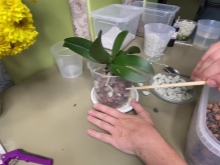


You should pay attention to the aerial roots of the orchid. If they start to silver, then the plant does not have enough moisture, and it's time to nourish the substrate.































The comment was sent successfully.